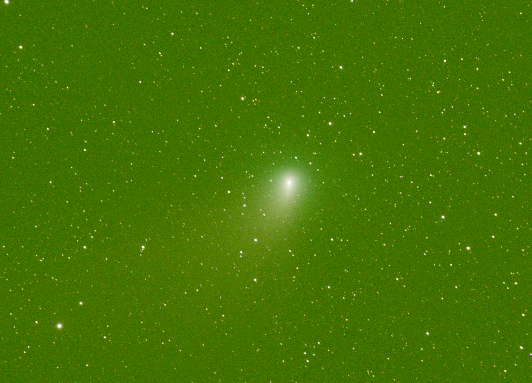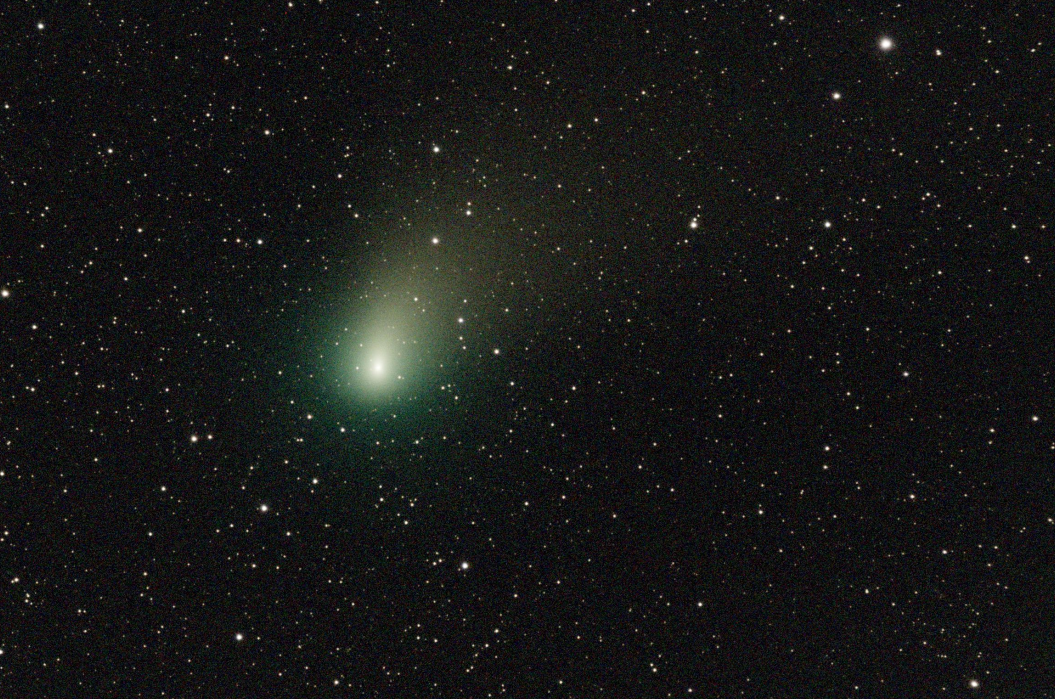Actual Step |
Taking Pictures of Comets |
Updated: 2023-06-28 |
|
Previous Step |
||
|
Next Step |
Frame Capturing using the ASI AIR Based Workflow |
|
|
Tutorial(s) |
I captured the Green Comet!! C/2022 E3 ZTF - YouTube How I Photographed the Green Comet | Comet C/2022 E3 ZTF (astrobackyard.com). |
|
Because comets are fast-moving objects, some of which pass close to Earth or the Sun on a regular schedule, and others of which are discovered with only a short warning time you should watch the media for news or search the Internet or the SkySafari app for current comets.
Also the brightness (magnitude) of comets has a wide range from -2 to +20 and more, estimating the brightness of comets is quite difficult. In addition to the large variability in magnitude, the size of the comet and its tail is also important for the choice of equipment and location, as well as the distance of the comet from the horizon and perhaps the moon.
Comet C/2020 F3 (NEOWISE)
|
C/2020 F3 (NEOWISE) with a normal SLR camera (Fujifilm X-T3) using a focal length of 55mm (ISO 400 - 20s f/2.8) with surrounding houses. |
and on an other day the same camera with a telephoto lens of 300mm (ISO 3200 - 10s, f/5.2) |
Comet C/2022 E3 ZTF
On the other hand, comet C/2022 E3 ZTF was much fainter (~ magnitude 5.5 on 08/02) and smaller than C/2020 F3 NEOWISE on February 07 and 08, 2023, after several weeks of bad weather, the first opportunity to observe the comet.
My first attempt to take a picture of the comet with the SLR camera on the 7th of February using a telephoto lens with a 100 mm focal length gave only a very moderate result.
Next I tried a telescope with a focal length of 600 mm (TSO 90/600) in the early evening of the next day (February 8, 2023) before the nearly full moon rose above the horizon at 20:16h. Unfortunately the sky conditions were only mediocre with high speed winds in the upper atmosphere and a rather bright sky, resulting in a lot of background noise.
To simplify the search for the comet I used the ASIAIR Pro as guider in combination with SkySafari Pro on IOS, as SkySafari knew the current position of the comet and could therefore directly slew the telescope to the correct position.
In addition, the time between darkness and moonrise was too short to calibrate all the entire equipment, the exposures started at 19:33h and ended at 21:27h including a nearly full moon after 20:16h.
100 frames with 60 seconds exposure time each were captured using a ZWO ASI294MC Pro Color with a gain of 120. Frame #20 (debayered but not yet background enhanced) is shown here as an example of the relatively poor background quality:
|
100 frames with 60 seconds exposure time each were captured using a ZWO ASI294MC Pro Color with a gain of 120. Frame #20 (debayered but not yet background enhanced) is shown here as an example of the relatively poor background quality |
Result after post processing of a single frame |
|
After starless integration of 85 good images and alignment to the comet |
Same set of 85 good light frames using comet-aligned integration to show a fixed comet against a moving star background |
Also available: Video clip showing the moving comet against a fixed star background using the same set of light frames as above.
Please see the comet image processing description to see the results and how this video was created.
Created with the Personal Edition of HelpNDoc: Single source CHM, PDF, DOC and HTML Help creation






